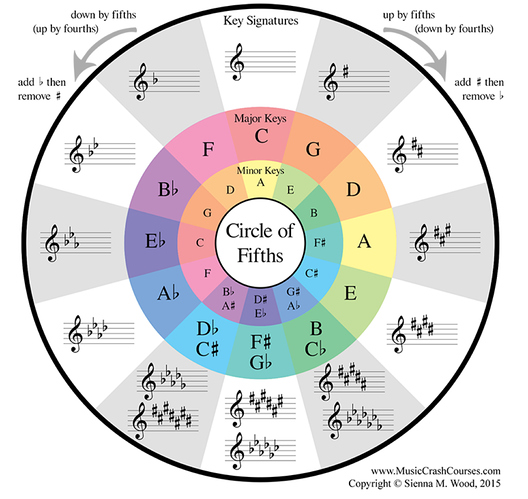Yep, that’s all dead on.
I suppose you could try to glean data about diatonic chord progression here, but this is more about keys than chords. That’s why there’s no diminished seventh chord anywhere - the major/minor designations aren’t talking about chords (primarily at least).
The only big thing that’s missing from our discussion so far is the helpful role this chart can play in remembering key signatures -which are missing from this version of the chart. Here’s one with more data (and more colors ![]() )
)
So important tidbits here:
- moving in fourths adds flats
- moving in fifths adds sharps
- relative minor/major keys share a key signature (i.e. C major and A minor, same notes, same key signature)
You can also see how different interval movements will affect key signature. For example, if you skip one key and go from C to D, which is a whole step, you add two sharps (or if you jump back to Bb, you get two flats). So you can file that away and know that any time a song modulates up a whole step, for example, there will be two notes that change from the previous key.
@Gio, anything to add? Curious if you ever use the circle to talk about chord progressions like Brian was talking about, I’d actually never heard of it being used like that.
